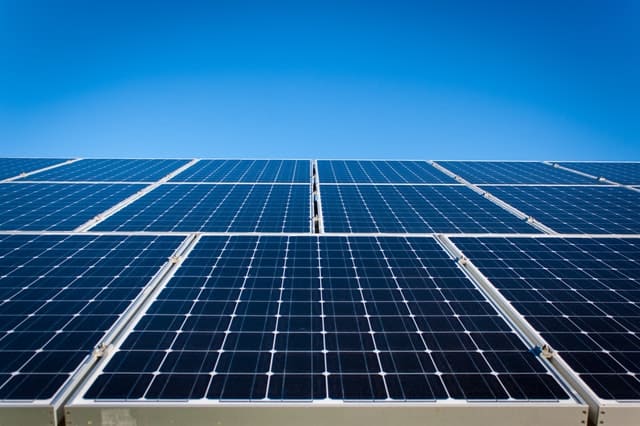Modern life, it seems, is oriented in favor of maximum convenience. But maximum convenience isn’t always the most sustainable way to live, and convenience tends to command a price premium. On a rapidly warming planet with finite and diminishing resources, choosing to live more sustainably, even at an individual level, can make a real difference on the world we live in.
Living more sustainably doesn’t have to be difficult or expensive, though, and often the environmentally friendly decisions you make can actually save you money. Here are 16 practical tips to reduce your carbon footprint, curb waste, and pocket some extra cash along the way.
1. Pay attention to your thermostat
Lowering your thermostat setting between 7 and 10 degrees for eight hours a day could help you save as much as 10% on your heating (or cooling) bill. You can make the energy-saving process even easier with a programmable thermostat, as long as you use it properly and are pragmatic about the temperature settings you choose. It pays off.
2. Insist on using rechargeable batteries
Rechargeables have come a long way in just a few decades. They’re less expensive than ever, they hold a charge so that they’re often ready to use right out of the package, and they last a long time between charges. You’ll definitely save money if you make the switch from those outdated, disposable alkaline batteries. Be sure to recycle your old batteries, though, as they’re especially toxic and shouldn’t be thrown away.
3. Ditch the bottled water
Bottled water is fairly expensive, and it often creates a lot of needless waste. If you live in an area with drinkable tap water, you can cut back on that unnecessary plastic by using your reusable container of choice. Sure, disposable plastic bottles are technically recyclable, but a lot don’t make it to recycling plants. With plastic pollution impacting nearly every corner of our planet, saying no to bottled water when you can is a great choice you can make in the name of sustainable living.
4. Choose reusable containers wherever you can
Reusable containers aren’t good for just water. Bring your own mug to your local coffee shop in the morning instead of wasting a cardboard cup, and remember to bring your reusable bags when you visit the grocery store. Some retailers will give you a small discount for your trouble, but helping curb the staggering volume of waste generated by typical consumers on a daily basis is reason enough to make an effort.
5. Practice sustainable shopping
Even at the grocery store, you can make good choices that help the planet along with your wallet. Buying dry goods in bulk is often cheaper per ounce—and it saves packaging if you bring your own reusable bags or jars. Meat, seafood, and produce grown locally also require fewer carbon emissions to arrive at your local market than those grown elsewhere. Select products with recyclable packaging wherever you can.
6. Reduce your meat consumption if possible
Due in large part to the rise of factory farming, raising animals for meat requires more resources and creates more pollution than an equivalent quantity of vegetables or grains. You don’t have to go vegetarian to make a difference, though. Merely reducing how much meat you eat (if your health and means allow) as with the popular “Meatless Mondays” concept, helps to minimize your personal carbon footprint. It’s a valuable reminder that even the dietary choices we make can have a broader impact on the world around us.
7. Prepare food mindfully
Eating at restaurants less frequently is a huge money-saver, but making food at home can also help you prevent waste. So if you have the time or ability to cook meals for yourself, be mindful of how much you make and save any leftovers. Seek to reduce the amount of trash you produce, and compost food waste for re-use in a vegetable garden. An incredible amount of edible food ends up in landfills each year, and being personally accountable for cooking and eating the food we buy is a great solution.
8. Consider solar power
Residential solar power systems aren’t as expensive or complicated as you might think, and nothing is more sustainable than reducing your reliance on the local power grid—or disconnecting from it completely! While it sometimes takes several years to recover the initial investment in solar panels and batteries, harnessing the sun’s natural energy will save more, long-term, than most energy-conservation tactics.
9. Turn off interior lights and the TV
Lighting makes up about 9% of residential electricity usage, so simply turning off the ones you’re not currently using can have an immediate impact. As for the television, modern flat-screen LED units don’t use as much energy as those old tube models, but even the most efficient model won’t save much money or electricity if it’s left on all the time in the background. If you’re not actually watching it, turn it off.
10. Unplug devices and small appliances
Many of the devices in your home consume power even when turned off, just by virtue of still being plugged in. This phenomenon is called “phantom power” or “vampire power,” and it adds up: sleeping devices may account for 5–10% of household power use. How many are plugged into outlets at your home right now? Consider your coffee maker, Blu-ray player, phone charger, toaster, hair dryer, and blender—how many of those can be unplugged when not in use?
11. Go paperless
Opt for paperless billing and paperless statements for all of your credit cards, bank accounts, and utilities. In a world as digitally connected as the one we live in, it’s just unnecessary to cut down trees in order to have a physical record of how much your cellphone provider auto-drafted from your account this month.
12. Curb your water consumption
Sure, wasting water inflates your water bill, but it also has a much greater negative impact from a sustainability perspective; clean water is a precious resource in many areas. Luckily, saving water is pretty simple. Run only full loads through your washing machine and dishwasher. Turn the faucet off while you’re brushing your teeth. See if you can trim a couple of minutes off your typical shower, and be sensible when it comes to watering your lawn.
13. Boost your home’s energy efficiency
Many homes, especially older homes, can benefit significantly from energy-saving upgrades like new weatherstripping or additional insulation. This kind of upgrade can be relatively inexpensive and will do a lot of good for energy conservation. You can also consider having your vents cleaned to improve airflow if your heating and cooling system has trouble keeping up when outside temperatures are especially hot or cold.
14. Take advantage of “green” energy credits
Many forward-thinking energy companies offer green energy plans for eco-conscious consumers. Some are backed by renewable energy credits, and others allocate electricity generated by renewable energy technologies like wind or solar power. Let your energy provider know that you’re interested in reducing your carbon footprint to see if a renewable-energy offset program is available in your area.
15. Carpool or drive less
Finding a carpool partner can be difficult, but sharing the ride—and splitting fuel expenses—with a coworker can mean significant savings for those with a longer commute. Few choices we make can reduce our environmental impact as directly as simply driving less, though. We’ve grown accustomed to driving everywhere, but try taking public transit, riding a bike, or even walking to the store if you can. It’s a nice chance to see more of your neighborhood, and it’s great for the planet.
16. Budget for sustainability
One of the easiest, and perhaps most frequently overlooked, ways to live sustainably and save money is to simply create a budget. Track your expenses, and take a look at where you’re spending money—and why. Are you buying things you don’t need or replacing items that could be repaired or used for longer? Western society is increasingly plagued by overconsumption, but one surefire way to live sustainably and save money is to avoid buying things you don’t need.
These tips won’t all work for every situation, so pick the ones that work for you. In the end, sustainable living starts with the small personal choices we make: how we shop, what we eat, how we get to work. No single decision we make in our households or personal lives will single-handedly end pollution or reverse climate change, but every time we skip a bottled-water purchase or leave the car in the driveway we abstain from actively participating in our planet’s destruction. Saving money in the process is the icing on the cake.






